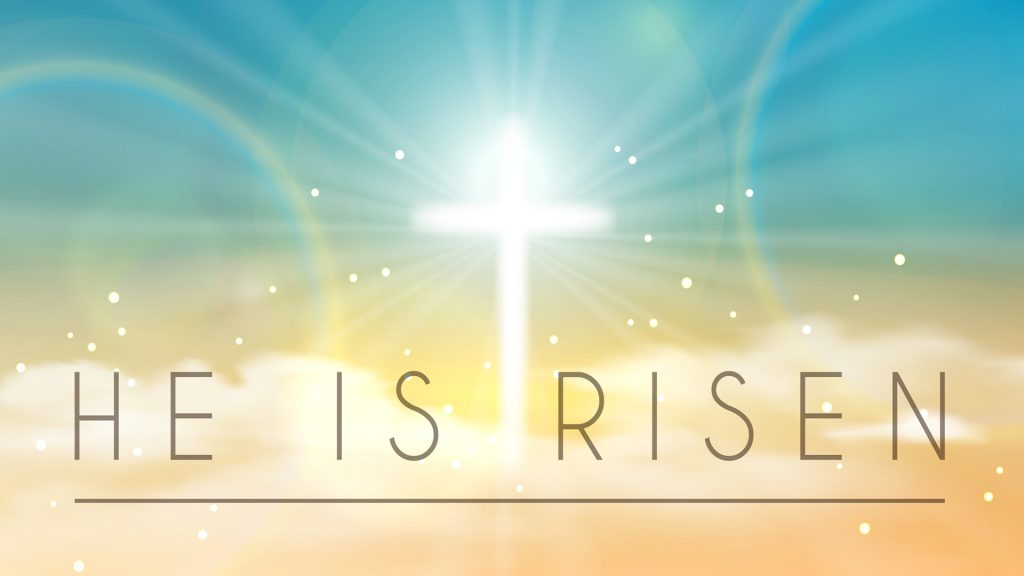
Now the eleven disciples went to Galilee, to the mountain to which Jesus had directed them. When they saw him, they worshiped him, but they doubted. And Jesus came and said to them, “All authority in heaven and on earth has been given to me. Go therefore and make disciples of all nations, baptizing them in the name of the Father and of the Son and of the Holy Spirit and teaching them to obey everything that I have commanded you. And remember, I am with you always, to the end of the age.”
–Matthew 28:16-20
Now on that same day two of them were going to a village called Emmaus, about seven miles from Jerusalem, and talking with each other about all these things that had happened. While they were talking and discussing, Jesus himself came near and went with them, but their eyes were kept from recognizing him. … When he was at the table with them, he took bread, blessed and broke it, and gave it to them. Then their eyes were opened, and they recognized him, and he vanished from their sight. … That same hour they got up and returned to Jerusalem, and they found the eleven and their companions gathered together. They were saying, “The Lord has risen indeed, and he has appeared to Simon!” Then they told what had happened on the road and how he had been made known to them in the breaking of the bread. While they were talking about this, Jesus himself stood among them and said to them, “Peace be with you.”
–Luke 24:13-36
When it was evening on that day, the first day of the week, and the doors were locked where the disciples were, for fear of the Jews, Jesus came and stood among them and said, “Peace be with you.”
–John 20:19
Two themes run through these stories that sum up the central meanings of Easter. The first, in a concise phrase, is Jesus lives. He continues to be experienced after his death, though in a radically new way. He is no longer a figure of flesh and blood, confined to time and space, but a reality who can enter locked rooms, journey with followers without being recognized, be experienced in both Galilee and Jerusalem, vanish in the moment of recognition, and abide with his followers always, “to the end of the age.”
Together, the appearance stories in the gospels make explicit what is promised in Mark “You will see him.” They underline the parabolic meaning of Mark’s story of the empty tomb: Jesus is not among the dead, but among the living. Indeed, this is one of the central affirmations of Easter: Jesus lives. He is a figure of the present, not simply of the past. The presence his followers had known in Jesus before his crucifixion continued to be experienced and to operate after it.
As we understand this affirmation, it is not simply a statement about a brief series of experiences that occurred two thousand years ago for a period of forty days between resurrection and ascension. Luke, in his second volume, Acts, is the only New Testament author to suggest this, and it has become part of the Christian liturgical year. But…it is clear that Luke is not writing about “calendar time”: he has Jesus ascend twice, once on Easter day and again forty days later.
Rather, the truth of the affirmation “Jesus lives” is grounded in the experience of Christians throughout the centuries. Not all Christians have had such an experience. It is not essential. To quote from one of John’s Easter stories, “Blessed are those who have not seen and yet believe.” But some Christians to the present day have experienced Jesus as a living reality. For us, this is the experiential ground of the first of the central Easter affirmations: Jesus continues to be and to operate. The spirit, the presence, his followers knew in him before his death continues to be known. Jesus lives.
To state the second affirmation of the Easter stories in an equally concise phrase: God has vindicated Jesus. God has said “yes” to Jesus and “no” to the powers who executed him. Easter is not about an afterlife or about happy endings. Easter is God’s “yes” to Jesus against the powers who killed him. The stories underline this in different ways. In Luke and John, the risen Jesus continues to bear the wounds of the empire that executed him. In Matthew, the risen Jesus has been given authority over all the authorities of this world. Mark, writing most concisely among the authors of the gospels, says simply, “You are looking for Jesus of Nazareth, who was crucified; he has been raised.”
The authors of the gospels do not speak about Jesus’s resurrection without speaking about his crucifixion by the collusion between collaborators and imperial power. In the words of the earliest and most widespread post-Easter affirmation about Jesus in the New Testament, Jesus is Lord. And if Jesus is Lord, the lords of this world are not. Easter affirms that the domination systems of this world are not of God and that they do not have the final word.
Text taken from The Last Week by Marcus J. Borg and John Dominic Crossan

